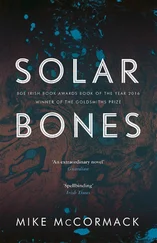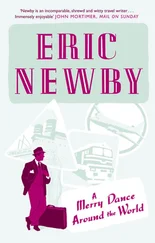Except for one couple. The man’s face shone red in the sun and he clutched a walking cane with which he jabbed at the sidewalk viciously. She, a little woman with a black headscarf and thick glasses, staggered along some feet behind him. As they came closer I saw, quite clearly, that they were connected by a studded leather leash roped round both their waists. I couldn’t tell if he was pulling her along by it, or she was trying to hold him in check.
Naturally, I gave them lots of room to pass.
The only children I saw on that walk weren’t pedestrians.
They were two boys of maybe ten years of age playing in an alleyway between buildings, kicking a ball made of some scraps of black cloth bound loosely together. As I passed by, one of the boys kicked the ball towards me in what looked like a friendly gesture. I made to kick it back then saw it was actually a dead crow, trussed up with string. I shrank from it, causing the boys to laugh in a most unpleasant way.
I NOW ARRIVED at the junction of King Street and Princess where, just as the railway clerk had promised, stood the Walner Hotel. The structure was certainly the tallest and most imposing on the entire street, jutting out prominently into the junction like the prow of a ship built of red brick that had somehow become beached in this landlocked place.
I pushed open the brass-bound swing doors and stepped into the hotel lobby. Away from the brilliant sun, all colours became muted. The lobby was long with a floor of green tiles. Couches and reading tables with the usual scattering of newspapers and magazines took up much of the space. I could see a large mural on the wall alongside the reception desk. It looked like a nineteenth-century country scene: men in black hats and trousers with suspenders seemed to be at work bringing in the hay, or doing other agricultural tasks, with horses and wooden wagons in the background.
How charming, I thought: probably a depiction of pioneer days, part of Camberloo’s history.
But as I walked towards the desk, a startling feature of the painting caught my eye. In a remote corner of the field where the work was going on stood the figure of a naked man with upraised arms. His entire body was impaled on a stake that exited from his mouth. I could hardly believe that such a horrific scene would be displayed in a hotel lobby.
Of course, when I looked at the painting more closely, I saw that what I’d taken for an impaled man was only an upended red wheelbarrow leaning against a post, its handles reaching in the air.
THE RECEPTION DESK itself was a long, polished mahogany counter backed by a framed mirror and the usual pigeonholes for keys and mail. No one was there, so after a moment I palmed the “Ring for Service” bell.
Immediately, from a room to one side of the mailboxes, a small man in uniform with swept-back grey hair emerged. He was quite handsome, except that where his nose should have been he wore a black leather cone tied behind his head with a lace. That made quite an impression on me, but I tried not to stare at the cone and concentrated on his eyes as I told him who I was.
“We’ve been expecting you,” he said. He had a pleasant smile and a lilting, nasal voice. Everything about him was pleasant except for that sinister cone. “Mr. Smith has reserved a room for you on the second floor. He’s left a message.”
He took a folded paper from one of the boxes and gave it to me. It was a brief note from Gordon, welcoming me and saying that a car would pick me up at six.
The little man now handed me my room key.
“The elevator’s in the hallway by the door, just past the mural,” he said. He smiled. “What do you think of our mural? It usually makes a big impression on visitors.”
I glanced towards it and made some flattering comment, happy not to have to avoid looking at his cone. I picked up my bag and began walking towards the hallway.
“The elevator’s around the corner to your right,” he called cheerily after me.
When I automatically looked back to thank him, I saw the man with his cone and then my own image, distantly reflected in the mirror behind him. I quickly found the elevator and pressed the solid brass number two.
MY ROOM IN THE Walner Hotel turned out to be cool and luxurious, with a big bed and heavy, expensive furniture. The bathroom had a dozen towels as well as soaps and shampoos. I lay down on top of the bed, enjoying the silence after the constant noise of travelling, and soon dozed off.
The bedside phone woke me: the voice of the little man with the nose cone informed me that the time was six o’clock and a car had arrived for me. I quickly pulled myself together and went down to the front door where a black limo with darkened windows waited. A chauffeur in a cap with a shiny visor showed me into the back seat. We drove west for a few miles into an area that gave glimpses of old trees and the manicured grass of a golf course. The houses were of a modern design and looked even bigger than those in the town. At one of these mansions the limo pulled into a long driveway and stopped beside a white-pillared portico.
I was halfway up the set of marble steps when the double doors were opened by Gordon Smith himself. He wore a dark formal suit rather than the tropical whites I associated with him. His hawk eyes that had seemed quite at home in the jungles of the south didn’t quite fit this civilized setting.
“Harry!” he said. “Good to see you.” His handshake was firm and cool.
He led me into a large white-painted hallway with a high skylight and open doors through which I could see spacious rooms. On the right was a wide stairway to the upper floor. Several discreet-looking paintings that might have been landscapes done in some abstract, geometrical style adorned the walls.
“This way,” said Gordon Smith.
We went through one of the doors into a room with fulllength windows looking out onto a neat lawn with trees and shrubs of the unobtrusive sort. The main furnishings of the room consisted of leather armchairs and white rugs. The paintings on the walls were watercolours of palm-clad tropical islands. Both the vegetation and the ocean were muted and tamed.
From a cabinet Gordon poured us both a glass of wine and we sat opposite each other on the leather armchairs. He inquired about my health and I assured him that I felt fine and was almost completely recovered from my sickness. I thanked him for his kindness in arranging the voyage for me.
“I’m glad you enjoyed it,” he said. “I’ve always found travel by sea to be a great way of relaxing.”
I understood what he meant. Being a passenger was very different from voyaging as a crew member, swabbing the decks, polishing brasses, doing anything that needed done, in no matter what weather.
“And the train from Quebec City?” Gordon said. “Was it comfortable?”
I told him how much I’d enjoyed the cleanliness and the spacious compartments. It had been worlds away from those little jungle trains crowded with people carrying babies or chickens or even pigs for the market, with the claustrophobic jungle on either side of the tracks and the glassless windows that allowed in insects as well as engine smoke.
Gordon Smith knew those experiences well, and smiled his agreement.
“And now, what about Camberloo?” he said. “What’s your first impression?”
I was honest in my answer. I mentioned the two people on the street who seemed to be leashed together and the boys playing with the dead bird. Then that I’d misperceived the wheelbarrow in the hotel mural, which had made me wonder if perhaps the lingering effects of my fever had distorted my grasp of things. I couldn’t even be sure now if the little man with the nose cone actually existed.
Читать дальше











